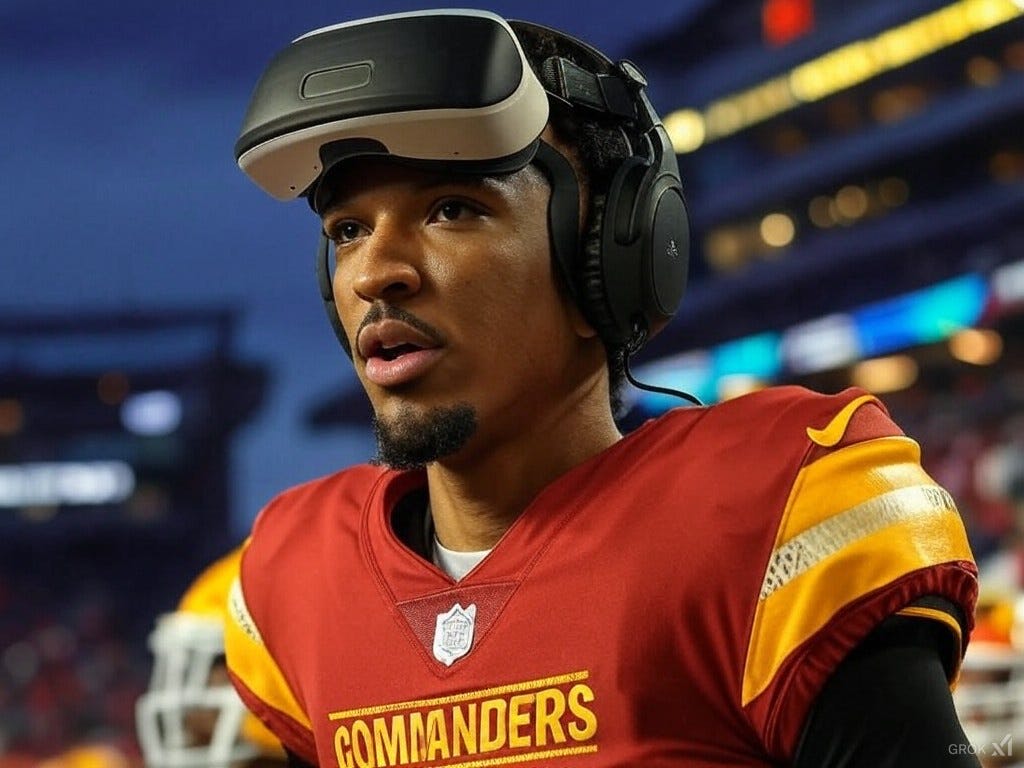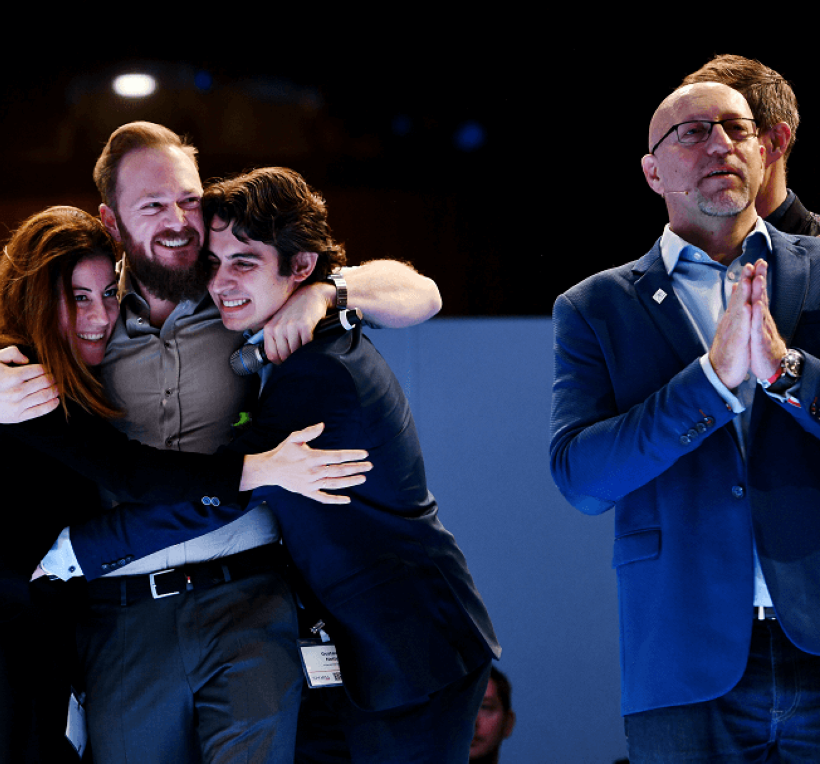

From Gimmick to Game-Changer: What Jayden Daniels’ VR Story Teaches Us About Innovation in Sports
3 Min Read
The Rookie Who Turned Around the League’s Worst Team
It’s 6:00am in Washington.
Rookie quarterback Jayden Daniels slips on a VR headset. Not for fun, not for hype, but to rehearse plays at 1.75× game speed.
By Sunday, when defenses move at “normal” pace, the game feels slower, clearer, almost predictable.
At first, his request sounded eccentric: “If you draft me, I want VR in my training.” But that unusual demand became a ritual, reshaped the culture of the Washington Commanders, and carried them to their first NFC Championship appearance in 33 years.
And this isn’t just an NFL story. Across sports, the pattern repeats itself:
- Soccer goalkeepers train against shots launched faster than physics allow, so real match balls look like they’re in slow motion.
- Basketball point guards run VR drills where defenses rotate impossibly fast, so the real court feels wide open.
- Tennis players face ball machines cranked above match pace, so they win extra milliseconds when it matters most.
The lesson? What looks like a1 gimmick becomes a game-changer once it’s woven into the daily fabric of performance.

Lessons for Sports Leaders
1. From showroom to culture
In 2017, Hoffenheim in the Bundesliga installed a VR training system. It looked futuristic… and gathered dust.
In Washington, the same idea became Daniels’ 6am ritual.
The difference wasn’t the technology. It was incentives and accountability. Where no one measured use, the system sat idle. Where VR became tied to performance and coaching, it thrived.
Takeaway: Innovation creates value only when it moves from demo to discipline and when leaders align incentives to make it stick.
2. Bottom-up demand accelerates adoption
Daniels didn’t wait for management. He insisted on VR in his contract.
The same dynamic plays out elsewhere: when NBA stars wear sleep-tracking rings, teammates follow.
Athlete-driven adoption isn’t just “nice to have” it’s a signal. It shows where innovation meets a real performance gap.
Takeaway: Leaders must learn to read and act on these signals. Ignore them, and you miss where innovation can have the biggest impact.
3. Top-down support is the enabler
The Commanders could have dismissed Daniels’ request. Instead, they backed it with resources and belief.
In tennis, tools like PlaySight only became mainstream once governing bodies gave them legitimacy.
This isn’t just support, it’s governance. Without a framework for testing, funding, and scaling, even great ideas remain one-offs.
Takeaway: Athlete pull sparks innovation, but leadership push builds systems that sustain it.
4. Cognitive speed beats physical edge
Daniels’ 1.75× sessions trained his brain to process defenses 80% faster.
And across sports, the same holds true: goalkeepers, point guards, and tennis pros all use accelerated drills so that real competition feels slower.
This isn’t just about reflexes, it’s about decision-making under pressure. The real competitive edge comes from seeing earlier, choosing faster, and executing with clarity.
Takeaway: The next performance frontier isn’t stronger bodies, it’s faster minds.
5. The story multiplies the impact
A rookie changing a stagnant franchise isn’t just effective, it’s contagious.
Kobe Bryant’s relentless film study once became Lakers’ DNA. Today, AI-powered video tools are taking on that same role of cultural identity.
This is more than morale. It’s Narrative Capital: the stories teams tell about themselves that attract talent, engage fans, and convince partners they’re betting on the right brand.
Takeaway: Embed innovation in the team’s story, and it becomes an asset that compounds far beyond the tech itself.
Breakthrough Insights for Sports Brands
- Fans crave transformation. Stories of change inspire more than raw tech ever could.
- Partnerships can scale impact. The Daniels case shows how athlete-driven innovation is a live opportunity for tech companies to co-create results with clubs.
- Sponsorship is shifting. The most valuable brands will be those that help athletes get smarter, faster, and healthier and proudly own that narrative.
- ROI matters. Innovation earns executive support when it connects directly to fewer injuries, sharper performance, stronger fan engagement, and greater sponsor value.

The Big Question for Leaders
Which innovations in your ecosystem are stuck as “showroom demos” impressive on tours, but rarely used?
And what might happen if you empowered athletes, coaches, or even young staff to pull those tools into the daily rhythm of your sport backed by clear incentives, governance, and ROI?
Because the difference between Hoffenheim 2017 and Washington 2024 wasn’t the VR headset.
It was leadership, adoption, and culture.
With love for sports and innovation
Amir




Comments
Luis Pinievsky
Great article! Short, Sharp and to the point!
Beverly Ryan-Redfern
Thank you for the insights they align with my innovation challenges. Do you have access to any insights with the rise of obesity and decline in participation in sport?